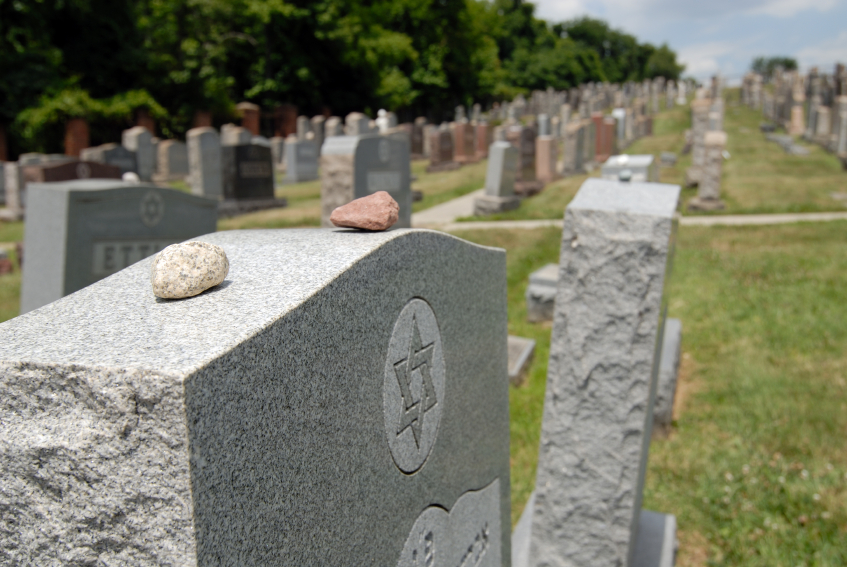There is a meaningful custom of visiting the graves of our loved ones during the period surrounding Rosh Hashana and Yom Kippur. What thoughts should enter our hearts and minds when we make this visit?
We can gain an insight from a thought-provoking Talmudic teaching. The Talmud says that one who visits a cemetery is not permitted to perform mitzvot ‘in the presence’ of those who are buried (Brachot 18a). The following examples are offered – one is not to wear tefillin on one’s head and not to carry a Torah scroll and learn from it in a cemetery. The Talmud states that this is an ‘affront’ to the dead. The Talmud then quotes the verse from Proverbs (17: 5), “He who mocks the poor affronts his Maker.” The ‘poor’ in the verse symbolizes the deceased in the cemetery who no longer can observe the commandments. This law is generally understood to mean that it is inappropriate to perform a mitzvah in the presence of those who no longer can.
This law is codified in the Halacha and followed in practice. It is commonly observed today in the following way: Those who wear their tzitzit out tuck in their tzitzit before entering a cemetery in order not to ‘offend’ those who can longer observe the commandments.
It is difficult to understand what the Talmud means when it suggests that that we might ‘offend’ the deceased: after all they are no longer living, what does it mean that they ‘take offense’?
Rav Avraham Yitzchak HaKohen Kook offered another way of understanding this Talmudic teaching (Ain Ayah Chapter 3:1). He offers a unique explanation of the verse from Proverbs: “He who mocks the poor affronts his Maker.”
Rav Kook explains that as we stand at the grave, those who have passed on from this world should not be viewed as ‘poor.’ On the contrary, the soul now resides in the world to come. Viewing the dead as ‘poor’ is not only inaccurate it is also offensive to the Creator – to the One who bestows life to every soul in the World to Come.
We all know that Jewish belief places the greatest emphasis on the preciousness of every moment of life in this world. It is in the here and now that we accomplish, that we are productive, that we grow and experience the vibrancy of life. On the other hand, Judaism also teaches us there is beauty and eternal bliss found in the Next World.
We as Jews live with this religious tension. This is articulated in one of our earliest Jewish teachings. The Mishna says (Avot 4:22): “Better one hour of good deeds in This World than the entire life of the World to Come; and better one hour of spiritual bliss in the World to Come than the entire Life of this World.” Both This World and the World to Come make up the totality of our existence and our life’s aspirations.
It is the Jewish way to fill each day with thoughts of the preciousness of each moment. However, there are times when we turn our thoughts to valuing and attempting to grasp the idea of life in the next world. When standing at a grave, Rav Kook reminds us that we are to open our hearts and attempt to recognize the preciousness of the spiritual afterlife. Wearing tefillin, studying Torah or even gazing at our tzitzit – are all examples of life affirming rituals of This World. At the cemetery these mitzvot should not be publicized. We should not be distracted from contemplating the precious teaching that the soul continues to live on in the Next World. Standing in a cemetery, we give prominence to our belief that wholeness and goodness exist in the Afterlife.
When we visit the grave of loved ones we are filled with heartbreak, we long for our beloved and we are filled with the feeling of deep sadness and loss; the empty space that now pervades our life. But the Talmud teaches that we are to reach deep inside and grab hold of our enduring faith that the souls of our dearly departed continue to live on beyond this world, meriting the joy and bliss of eternal life.
